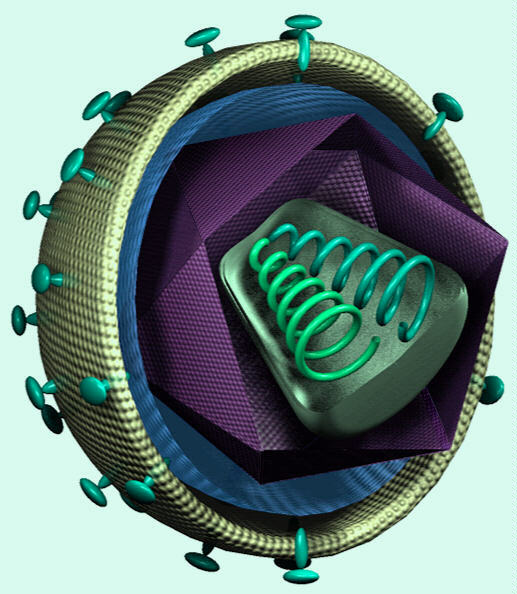
 |
Leigh Brown HIV Research Group | ||
 |
||||||||||||||||||
|
||||||||||||||||||
|
Previous work 1. Modelling the genetic basis of antiretroviral resistance The development of combination antiretroviral therapy was an immense breakthrough in HIV treatment, turning a previously lethal infection into a chronic treatable condition. In the absence of a vaccine, combination therapy is the only way HIV infection can be controlled, but there were two major problems, side effects due to toxicity, which have been greatly reduced in newer drugs, and the development of resistance. We used statistical modelling to analyse the contribution of genetic variants to antiretroviral failure in treated patients (Precious et al. 2000). We extended this approach to include the use of machine learning methods which are particularly useful for analysing data with more than two states (amino acids) at each field (amino acid position) using both in vitro drug susceptibility (Leigh Brown et al 2004) and in vivo response to treatment (Quigg et al 2002). More recently, working with Dr Michael Miller at Gilead Sciences, we developed new models for predicting resistance to tenofovir, which is now the most widely used thymidine analogue. These models, which introduced the random forests approach, revealed that amino acid 215 was more significant in resistance to the drug than many clinicians had previously thought (Murray et al. 2009). This work was a collaboration with Dr Deenan Pillay and others in the UK Collaborative Group on HIV Drug Resistance, and was funded by the Wellcome Trust and the BBSRC. 2. Evolution and adaptation of HIV HIV evolves very rapidly, both within patients and in the infected population. We have been working on the evolutionary genetics of HIV for almost 20 years (see eg. Balfe et al (1990), Simmonds et al (1991), Holmes et al (1993). We have been particularly interested in factors affecting the ability of the virus to adapt to selection, including effective population size Leigh Brown (1997), or population structuring, Frost et al. (2001), and we have considered both adaptation to antiretroviral drugs Leigh Brown & Richman (1997), and to the host immune response Yang et al 2005. Working with Dr Sergei Kosakovsky Pond and Dr Simon Frost at UCSD we have concentrated on the use of powerful statistical tools to analyse adaptive evolution at the codon level. We have applied these methods to investigate whether adaptation occurs differentially in genetically different human populations. This has revealed that host adaptation is a continuing phenomenon both between (Kosakovsky Pond et al. 2006) and within populations (Poon et al. 2007). We are currently extending this work to the study of different pathogens, including influenza. This work has been supported by the National Institute of Allergy and Infectious Diseases. 3. Modelling the determinants of virulence and host range in H5N1 influenza genome sequences H5N1 influenza has generated global concern because of the virulence associated with this strain in poultry outbreaks, and the high mortality (60%) associated with human infections reported by the World Health Organization. The current outbreak is also unusual in the high mortality which has been observed in wildfowl, the natural hosts for influenza viruses. Some reports indicate its virulence has increased over the last 10 years. There are over 8,000 sequences deposited in Genbank for H5N1 isolates, providing a rich resource for analysis. We are using full length genome sequences in multivariate analyses of amino acid variants associated with virulence and host range using graphical models. The use of graphical models in genetics goes back to Sewall Wright (Wright, S., 1921), but in combination with Bayesian inference and high performance computers they provide powerful tools, particularly when intereactions between sites are important. We have used BGMs to infer combinations of mutations that influence the virulence of H5N1 strains in mammals, and found that in addition to hemagglutinin sites, mutations in the polymerases and non-structural 1 protein were also important (Lycett et al 2009). This work has been funded by the BBSRC |  |
||||||||||||||||